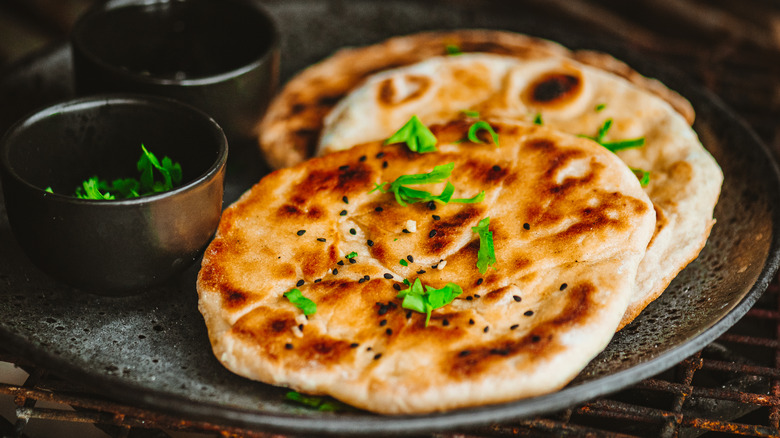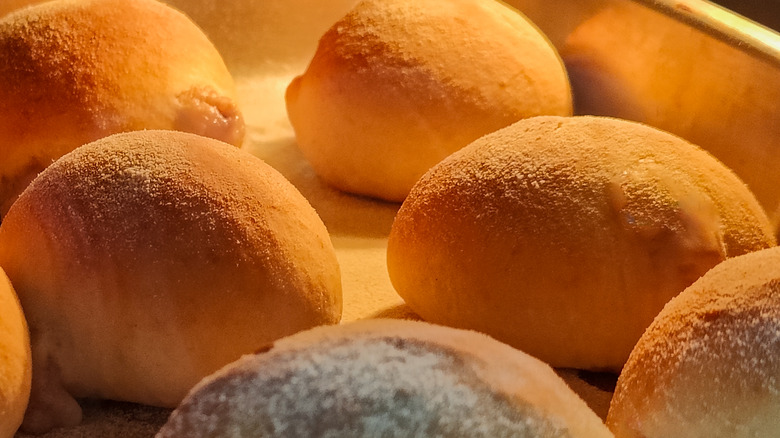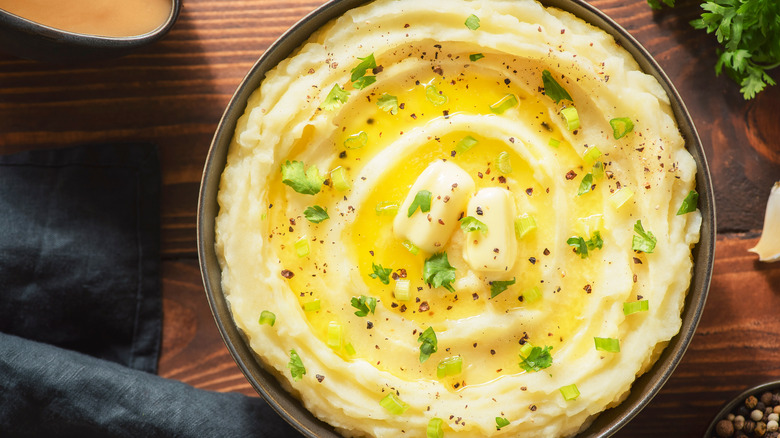Mashed Potato Flatbread Is The Genius Way To Upgrade Leftovers
Let's face it: Leftover mashed potatoes are boring. Whatever buttery, creamy magic they had when they were fresh is long gone by the time you dig them out of the fridge the next day. Of course, you could always add more butter and cream to revive some of their former glory, but the thrill has gone. This essentially leaves you with two choices: Make just enough mashed potatoes to eat right away or make enough to ensure that the leftovers can become the dough for an utterly delicious, yeasted flatbread.
The monolithic mashed potato mass you scoop out of the bowl might be unappetizing when reheated to serve on its own, but when combined with just a few other ingredients — wheat flour, salt, warm water, and activated bread yeast — it becomes the star of the show. If you haven't experienced the joys of baking with potatoes (besides, well, making baked potatoes), you're in for a real treat, and leftover mashed potato flatbread makes a terrific introduction.
What is potato bread, and where did it come from?
This flatbread is just the latest take on an ancient entity known as potato bread, which is sometimes made with potato flour in conjunction with wheat flour. Super soft, springy potato bread is universally loved — it appears in cuisines from all over the world, including places like Germany, Poland, Ireland, France, Turkey, and the Mediterranean. It was seemingly invented by an 18th-century French pharmacist during a time of famine to provide bread to the poor.
Potato flour, made almost solely from russet potatoes, doesn't need to be enriched with vitamins and minerals the way wheat flour does — they're already there. Potatoes contain considerable amounts of iron, potassium, and vitamin C, and all of that stays in the flour. Moreover, because of their high starch content, potatoes (either mashed or floured) are great at absorbing and retaining moisture, to the extent that it's not a great idea to bake potato bread solely with potato flour. What results in moist baked goods when paired with wheat flour produces a dense, gummy mess by itself.
Mashed potatoes already contain most of the ingredients for flatbread
However you make your mashed potatoes — whether the skins are on or off, and whether or not you add butter, cream, seasonings, or even roasted garlic — the leftovers are going to work wonderfully in flatbread. Think about it: To create a potato flatbread, a baker could either use a combination of potato and wheat flour before adding butter, cream, and other delicious flavors, or they could bring those to the table pre-assembled in a decently dehydrated leftover glob that's ready to become dough. (Worth noting is that this will work equally well for Indian garlic naan as it will for a Mediterranean flatbread.)
The gluten in the wheat flour will become stretchy during the proofing rise, while the leftover mashed potatoes will make the result uniquely moist, fluffy, and flavorful. Paired with your favorite flatbread flavors, this will prove to be an inspired combination. If you're already intentionally making too much rice to stir-fry your chilled leftovers, start doing the same with buttery mashed potatoes for tomorrow night's flatbread.


